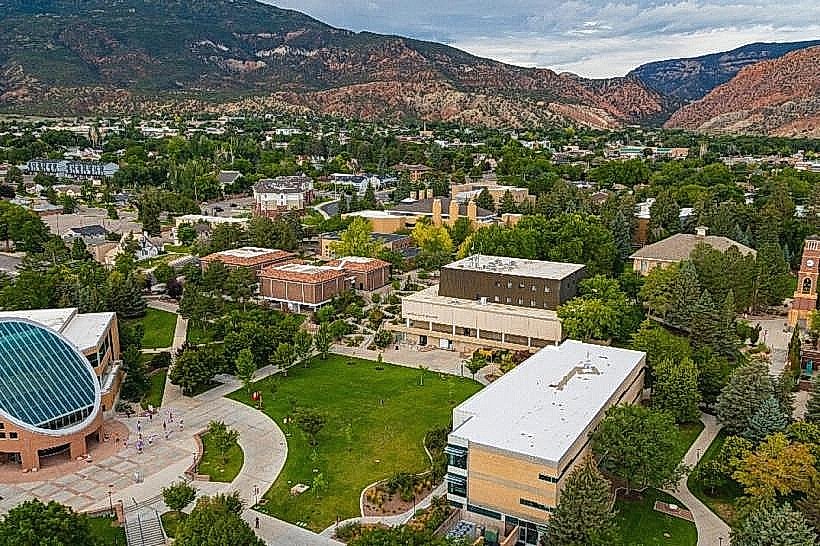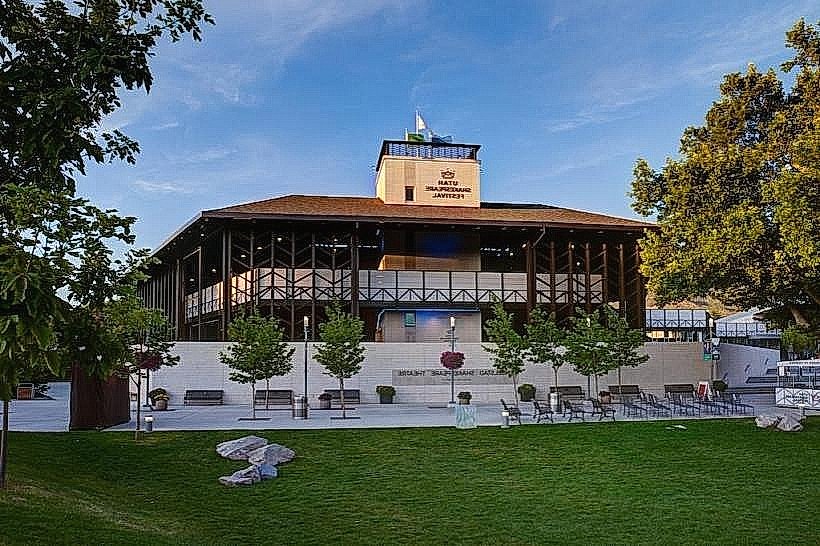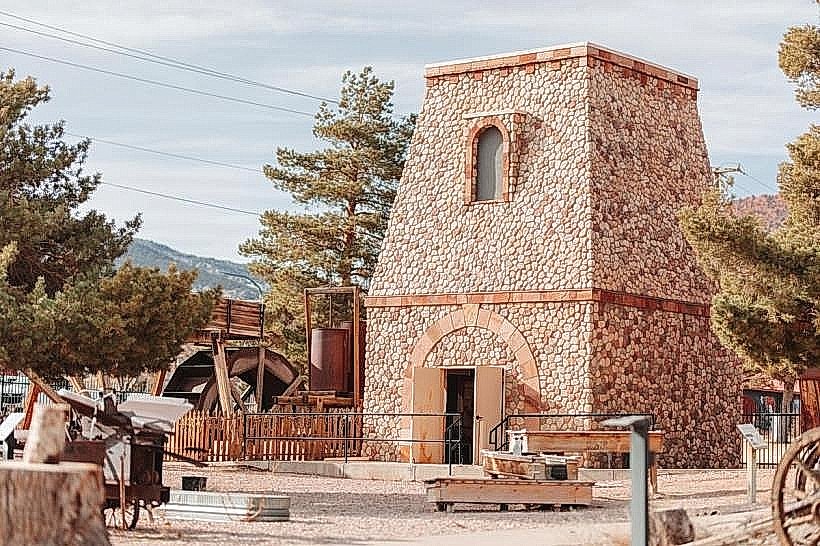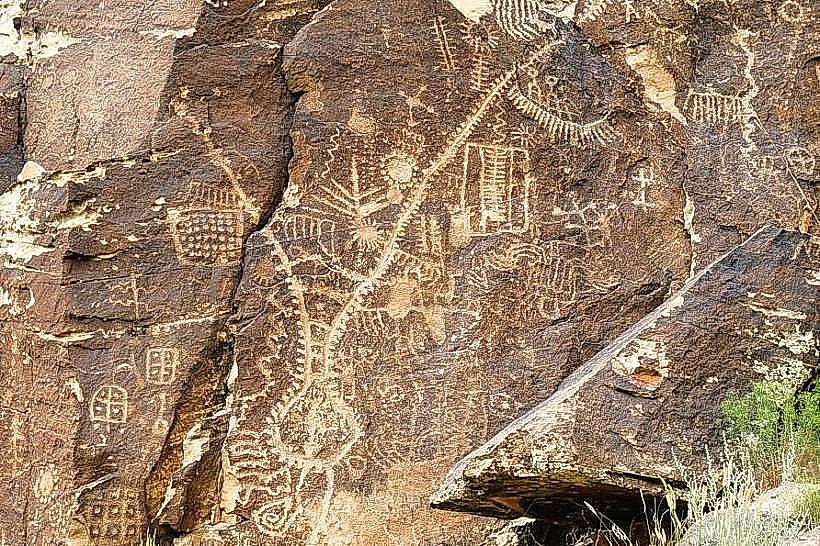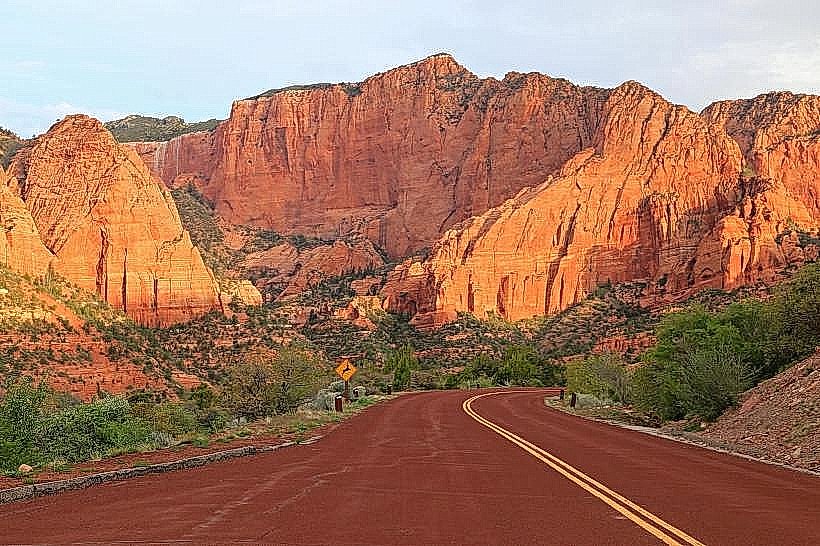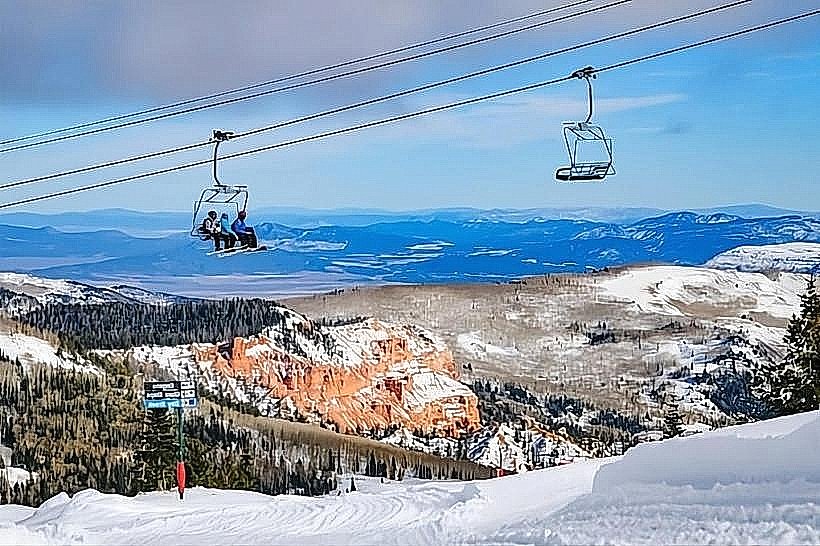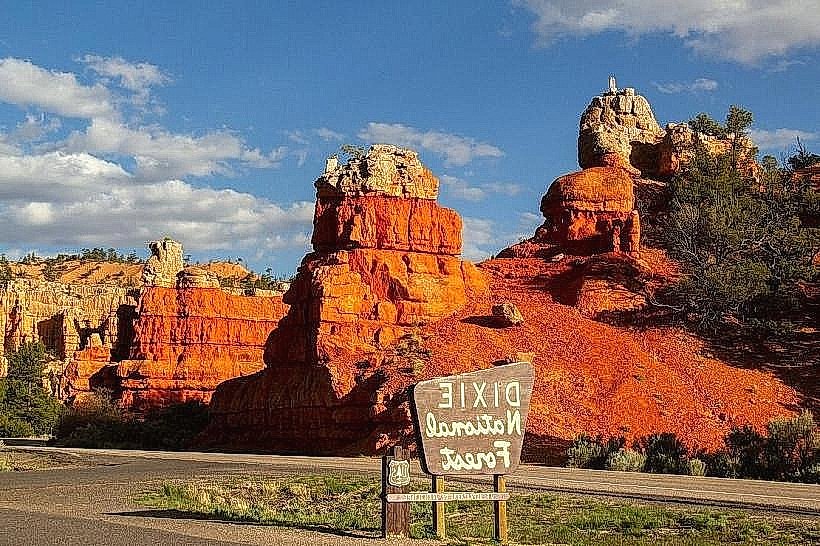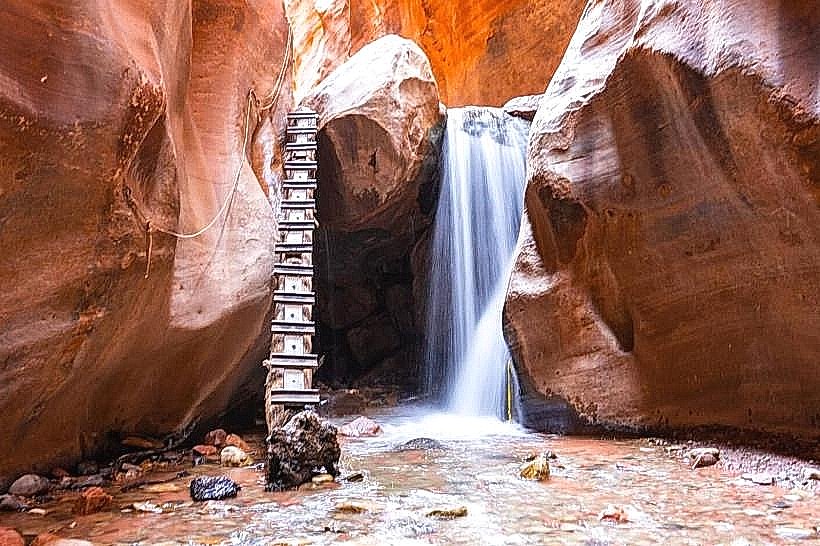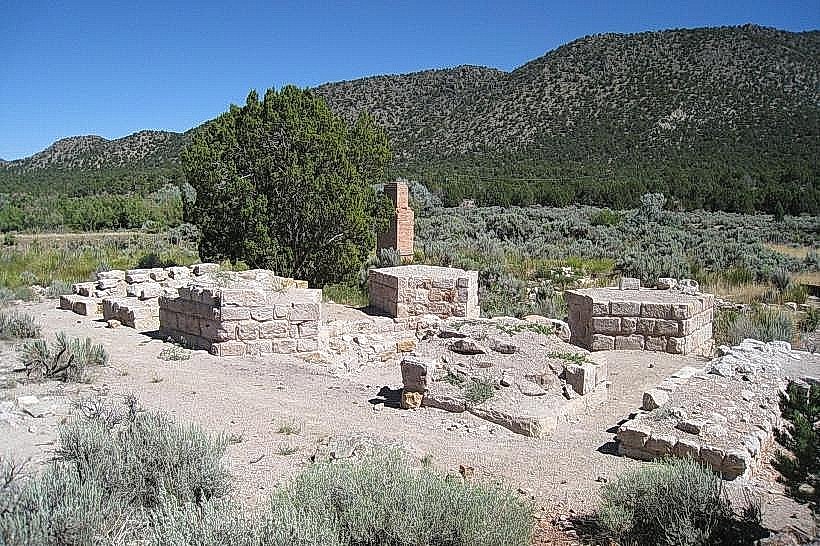Information
Landmark: Cedar Breaks National MonumentCity: Cedar City
Country: USA Utah
Continent: North America
Cedar Breaks National Monument, Cedar City, USA Utah, North America
Overview
High on the Colorado Plateau in southwestern Utah, Cedar Breaks National Monument opens into a stunning natural amphitheater, its cliffs glowing red and gold around jagged spires and wind-carved hoodoos, consequently often called Bryce Canyon’s smaller cousin, it stretches across about 21,000 acres at a lofty 10,000 feet, where crisp air meets sweeping red-rock views and a rare alpine desert thrives.The name “Cedar Breaks” comes from the Utah juniper-once called “cedar”-that grows thick along the eroded cliffs and the steep, jagged ground shaping the landscape, subsequently cedar Breaks sits along Scenic Byway 148, cradled by the rugged slopes of the Markagunt Plateau where the air smells faintly of pine.The amphitheater plunges more than 2,000 feet and stretches three miles wide, its walls striped with vivid bands of red, orange, and pale cream limestone, shale, and sandstone, and standing at the rim, you can witness the land sweep away toward far-off peaks, shadowed forests, and winding valleys, the horizon washed in a deep, evening blue.At this height, the air feels crisp and pure, and the breeze carries a coolness you won’t find in the scorching desert below, likewise wind whispers through scattered juniper and aspen, and in spring or summer, columbine, Indian paintbrush, and lupine spill across the meadows in sparkling, careless splashes of color.Clear skies can vanish in minutes, replaced by swirling mist or a sudden flurry of snow, leaving visitors with the sharp scent of freezing air and a feeling that the landscape might change again at any moment, while over millions of years, wind and water sculpted the monument into a breathtaking amphitheater, where sheer cliffs and strange hoodoos-spires, fins, and pillars-jut sharply from the dusty canyon floor, not entirely Bands of limestone, each with its own mix of minerals, splash the cliffs with vivid streaks of red, orange, white, and deep purple, consequently on the alpine plateau, spruce, fir, and aspen forests wrap around the rocky amphitheater, turning into a blaze of yellow and orange each fall.Follow the trail long enough and you’ll find a lookout where jagged rock walls rise in sharp detail, and beyond them stretches a broad, green plateau-an unforgettable glimpse of the monument’s blend of geology and thriving wilderness, likewise at Cedar Breaks, you’ll find trails for every skill level, from easy strolls to more challenging hikes.In a way, Spectra Point and Sunset View are short walks, but they reward you with sweeping amphitheater vistas, glowing gold at sunrise and deep orange at sunset, what’s more ramparts Overlook Trail offers a moderate climb along the rim, where sweeping views stretch to the horizon and a rocky ledge begs for a quick snapshot, under certain circumstances Alpine meadows burst with color, and winding trails lead you past wildflowers swaying in the crisp mountain air, what’s more in winter, you can snowshoe or glide across the trails on skis as the world turns into a crisp, white blanket; when summer arrives, hikers, birders, and photographers fill those same paths.Thanks to its high elevation and mix of habitats, the park bursts with life-subalpine fir and Engelmann spruce shade the trails, quaking aspens shimmer in the breeze, juniper scents the air, and alpine wildflowers splash color across the slopes, moreover fall’s seasonal shift bursts with color, especially when leaves blaze into deep reds and golds, slightly Mule deer wander the slopes, elk graze in the meadows, and mountain lions prowl the shadows, joined by bobcats and birds from swift peregrine falcons to noisy Steller’s jays, subsequently you’ll also find minute mammals and reptiles here, each shaped by the harsh, sun-baked air of the high-altitude desert, slightly Scenic overlooks along the rim let visitors take in sweeping views-sunlight glinting off distant cliffs-without the need for a long hike, as a result photography: The natural amphitheater, alive with seasonal blooms and shifting light, creates photo opportunities you won’t find anywhere else.The visitor center features exhibits on geology, ecology, and the monument’s history, along with maps and trail details-pick one up and you can feel the crisp paper in your hands, along with join a ranger for a hike or a lively talk, and you’ll discover how the monument’s layered rock, wind‑shaped pines, and darting lizards all tell its story.As you can see, Summer brings mild, comfortable days-perfect for hiking trails and spotting vivid wildflowers swaying in the breeze, furthermore fall brings crisp air and bursts of fiery leaves, the kind that make photographers reach for their cameras.In winter, snow drapes the cliffs in white, quieting the world and opening the door to skiing and other nippy-weather adventures, while in spring, melting snow runs down into alpine meadows, splashing them with vivid bursts of color, though a few trails can still crunch under a layer of snow.You can reach it by driving along Utah State Route 148, roughly 40 miles east of Cedar City, where the road winds through crisp mountain air, on top of that you’ll find a visitor center, clean restrooms, picnic tables under the trees, and clearly marked trailheads, occasionally Visitors with limited mobility can reach several viewpoints along the rim, but most trails are rough underfoot and call for sturdy shoes, equally important cedar Breaks National Monument leaves a vivid final impression, where sculpted cliffs rise above a high desert dotted with alpine wildflowers.A sweeping amphitheater rises around you, its cliffs glowing in reds and golds, while spring brings bursts of wildflowers that make the whole scene feel alive, also hike the rim, snap the sunset’s fire-orange glow, or stand still in the hush beneath towering cliffs-whatever they do, visitors wander away with a deep respect for Utah’s wild variety and the ancient forces that carved it.
Author: Tourist Landmarks
Date: 2025-10-08

